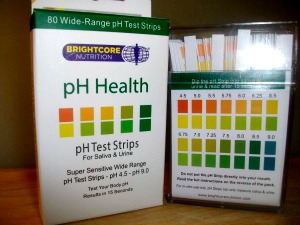- Home
- Testing
Yeast Infection Test
For an Accurate Diagnosis

Now days, we have more choices when it comes to deciding on a yeast infection test. If you don't know where to start, there are some simple tests that can be done in the privacy of your own home.
There are seven different types of tests you might consider taking if you want to know if your body is prone to Candida. Which ever test you choose, it should give you a better idea of how far Candida has impacted your body. The seven types of tests are:
pH Blood Test
pH Urine TestpH Saliva Test
Candida Spit Test
Pelvic Exam
Take Home Yeast Infection Test
Stool Test
pH and Yeast Infection Test Connection
One such test has to do with body pH ranges. These ranges are on a scale from 0-14. The lower the number on the scale is, the more acidic it is said to be. The higher the number is on the scale the more alkaline. The human body wants to stay in a balanced state at all times, around 7.35-7.45. Different areas of the body each have their own pH level. For instance, the pH level of saliva and urine is usually lower than blood.
A doctor can perform a blood test for you if you are concerned about over acidity. Blood tests are the most reliable and they also are the most narrow, meaning there is not much room for fluctuation. If your bloods pH is out of it's normal range, that would mean death. Just a small change in pH will have a tremendous effect on your health because each number change is 10 times greater. For example a pH of 4 is 10 times as acidic as a pH of 5.
Urine would be the next most reliable yeast infection test although urine does fluctuate a bit. There are certain paper test strips (litmus paper) that can be bought online or at health stores for home use. Most of these tests involve color-coded strips that tell you how acid-alkaline your urine sample is at that time of day. Because the pH of urine fluctuates widely, the test is done at different times during the day.
Salivary tests can also be done with paper test strips that are color-coded. The test is done several times a day in order to get an accurate reading. The test can be done at home and the process only takes minutes. A saliva test can be ordered online or bought from health food stores.
Candida Spit Test
The Candida spit test may be the most convenient of all the yeast infection tests. It involves testing the saliva. If you suspect you have candida, in the morning before you go to the restroom and before you eat or drink anything, get a glass and fill it with room temperature water.
1.) Spit in the glass.
2.) Watch what happens to your saliva for about 45 minutes.
3.) If your saliva immediately falls to the bottom of the glass and is cloudy with long strings, that is a good indication of the presence of Candida.
In general, the more cloudy and the more stringy the saliva is, the more severe case of Candida. I find it beneficial to repeat this procedure every day during a Candida cleanse or for a month or so during an anti Candida diet. That way you can gauge whether your preferred treatment is working. Ideally, as the days go by the cloudiness and strings should be less and less. Some people prefer an actual blood test or pelvic exam for a yeast infection test so really the choice is yours and what you feel comfortable with. The good thing about the Candida spit test is it can be used in conjunction with any other yeast infection test. You can see information about yeast infection symptoms here.
Pelvic Exam
For women, a doctor can perform a pelvic exam to determine if you have a vaginal yeast infection (vulvovaginal candidiasis). This yeast infection test requires a doctor taking a speculum and inserting it into the vagina to obtain a culture of the vaginal secretions. Visually, the vaginal fluid may also aid in determining what kind of infection if any is present. In a separate procedure, a wet mount should be utilized to examine vaginal secretions for a yeast infection. A swab of the vaginal discharge will be taken and examined further under a microscope to determine if there is a fungal overgrowth outside normal ranges. The procedure takes about 10 minutes and the results from the vaginal examination could take up to a couple of days to monitor how fast the yeast grows.
Home Vaginal pH Test Kit
Home vaginal pH test kits measure the pH acidity of vaginal
secretions. The test is very similar to the pH test doctors use for
their vaginal pH tests so it is deemed reliable in that sense. For this
test, you would hold a paper test strip up to the vaginal wall in order
to get a sample of the secretion and compare the color that comes out
on the paper against a color chart. The chart shows how acidic the
secretion is. The test does not identify different types of infections
and is not meant for sexually transmitted disease testing but it can
simply be used as a guide in determining if you might have a yeast
infection, bacterial vaginosis (BV), or Trichomoniasis (Trich). Each of
these conditions being different from each other. Once the home-kit is
done further follow-up can be administered by a doctor.
Stool Testing
Stool testing is a very important tool that should be used to test the level of beneficial bacteria, or lack of, in your body. Lactabacillus acidophilus and Bifidobacterium organisms should be at appropriate levels compared to a healthy gastrointestinal tract. Special care needs to be taken when selecting a lab that specializes in stool testing because you need lab results that are accurate and adheres to certain standards. Simply taking a stool test for parasites and blood is insufficient.
Related Pages

Popular Articles


